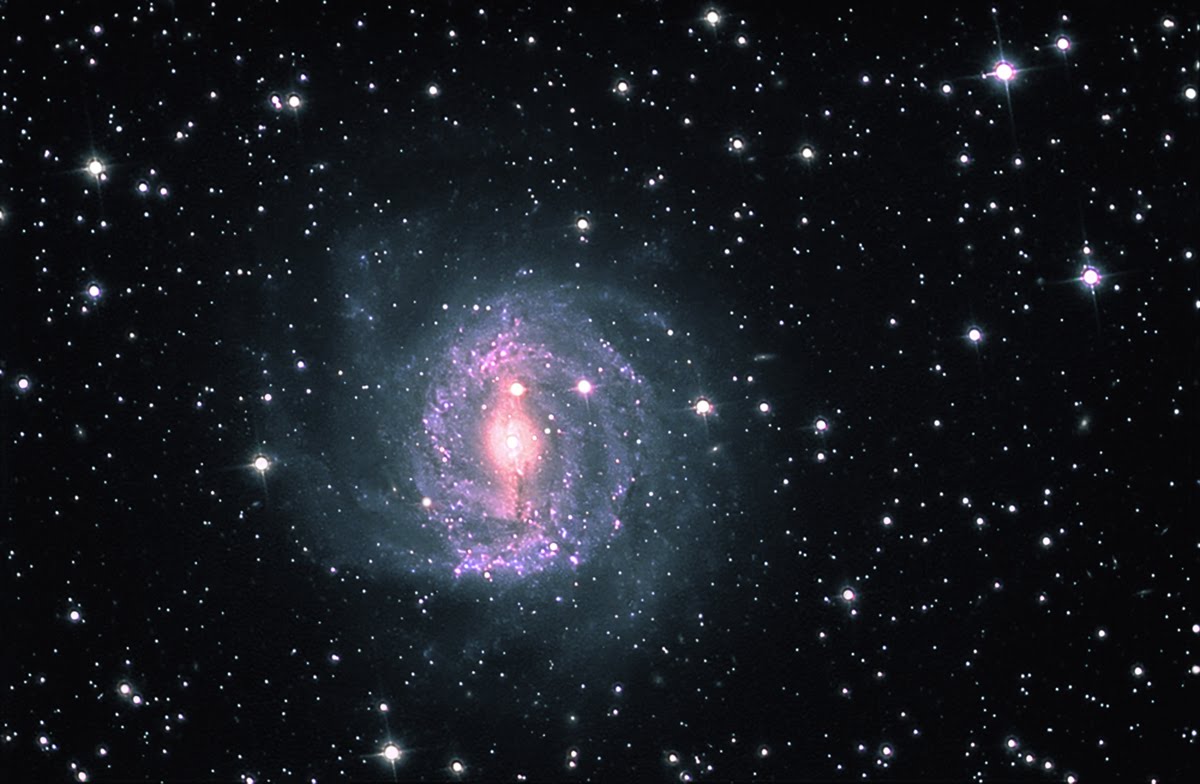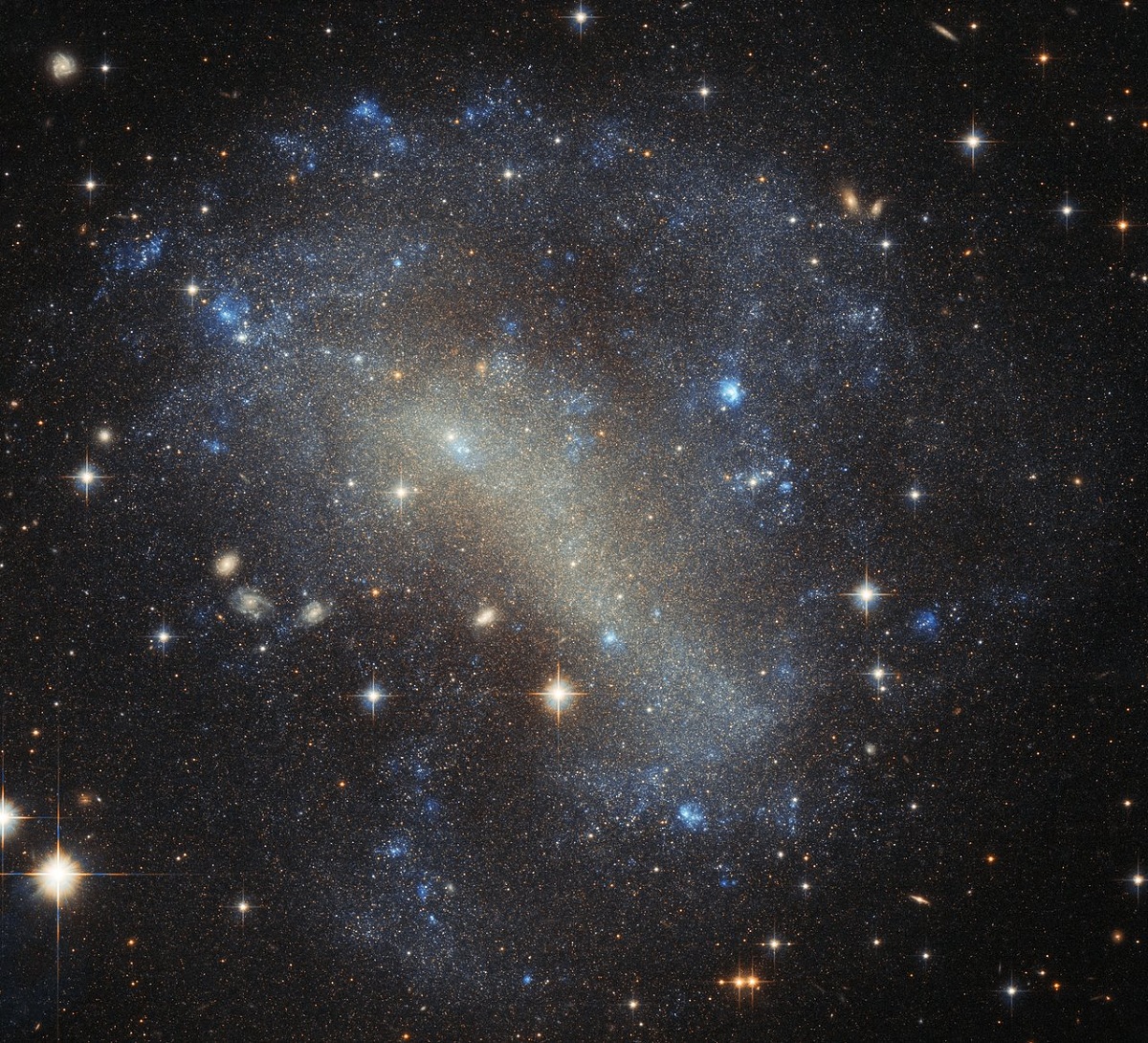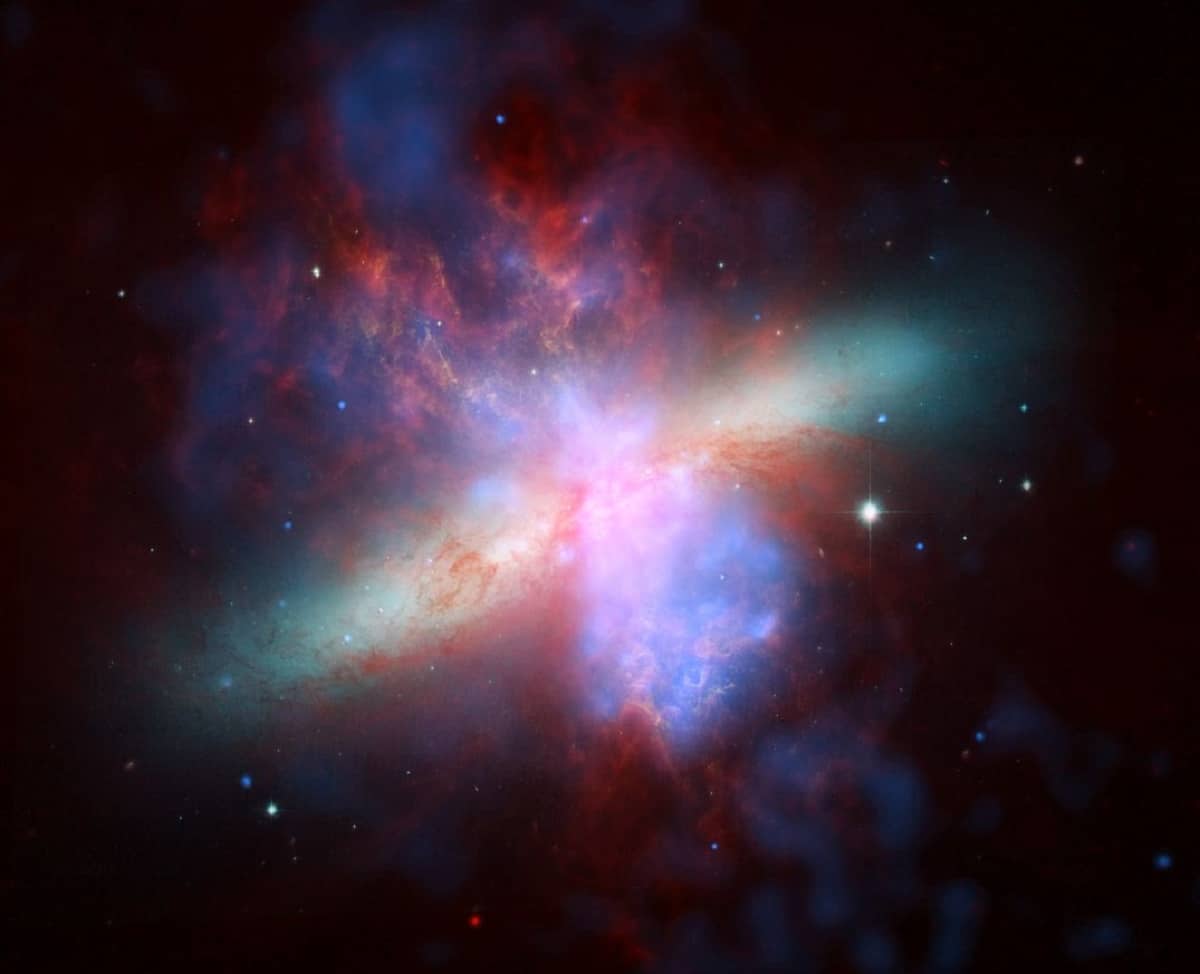
We know that there are different types of galaxies according to their formation and morphology. The composition of each of the galaxies is different and this makes it have unique characteristics. Today we are going to talk about irregular galaxies. It is a conglomeration of stars, planets, gas, dust and matter that are united by the force of gravity but visually lack a type of organization.
In this article we are going to tell you all the characteristics, formation and evolution of irregular galaxies.
Key features

Irregular galaxies are known to be those that do not have a visual organization. LStudies estimate that approximately 15% of galaxies are irregular. Unlike galaxies such as the Milky Way and Andromeda that have a nucleus, a disk and some well-defined spiral arms, there are galaxies that do not have any type of symmetry or structure. Some of them have incipient bars or arms. But it is not a definite morphology.
The lack of organization that irregular galaxies exist is attributed to several causes. One of the most affected to explain the formation of this type of galaxies is that there was a colossal explosion. The colossal explosion took place in the core of the galaxy and caused fragmentation is the dispersion of almost all content without losing all cohesion. In irregular galaxies you can find a deformation due to gravity exerted by some other neighboring galaxy that is larger.
We know that our galaxy, having a spiral shape and being large, has distorted two galaxies and nanas that are known as Magellanic clouds. It has been suggested that these two small galaxies are merging with our own. In the distant future it is possible that all this matter they contain will become part of the Milky Way.
There is another irregular galaxy well known for being very bright. It's about the Cigar galaxy. It is a type of galaxy that is very rich in interstellar matter and in its interior the stars are forming at an accelerated rate. When they are young, the stars are blue and very bright, which explains the extraordinary brightness of this irregular-type galaxy.
Shapes and description of irregular galaxies

One of the characteristics by which irregular galaxies differ from the rest is by their luminosity. And it is that this luminosity comes from the energy per second the galaxy emits at all frequencies and is proportional to the number of stars it has. Irregular galaxies usually have a large number of stars that make them very luminous.
The color of the galaxies is related to the stellar population. There are two types of stellar populations. The stars belonging to stellar populations I are those that are young and heavier elements such as helium predominate. On the other hand, in population II there are some elements of low metallicity and are considered to be older stars.
In the red sequence of the stars we see that galaxies appear with little or no stellar genesis. This type of galaxy category encompasses almost all elliptical galaxies. In contrast, galaxies with a high rate of star formation are found in the bluest zone. Among these galaxies that are full of new star formation we find the aforementioned Cigar Galaxy.
The greenest zone is a transition region where galaxies that have both young and old stellar populations meet. We can say that the Milky Way and Andromeda are examples of these galaxies that contain of the two stellar populations. These types of irregular galaxies are quite interesting to know because they are the bluest of all. Although they do not have a remarkable shape, they can say that they have a center. And it is that in the center of these galaxies are the highest stellar birth rates. The most normal is that irregular galaxies are considered the youngest.
Types of irregular galaxies

Edwin Hubble was an astronomer who was in charge of classifying the different galaxies according to their apparent shape. After analyzing many photographic plates with the galaxies he was able to establish the basic patterns and the different types of galaxies. We have elliptical, lenticular, barred spiral, spiral, and irregular galaxies. Irregular ones are those that do not have any kind of apparent shape. Most of the galaxies that exist in the universe are of the elliptical or spiral type.
As we have learned about the galaxies, the classification has been expanded to be able to classify all these categories that do not meet a specific form. Here we find type I and II irregular galaxies. Although with some limitations, Edwin Hubble's scheme is of great help in establishing the characteristics and properties of these irregular galaxies. We are going to describe what are the characteristics of each type:
- Type I irregular galaxies: are those in which the original Hubble sequence appears, such as Magellanic cloud-type galaxies. It can be considered that they are a mixture between spiral galaxies that have not fully developed the structure or that have a rudimentary structure.
- Type II irregular galaxies: are those that are composed of very old and red stars. Normally, these stars tend to have less luminosity and they are galaxies as matter is already diffuse and they do not have any shape.
We see the example of the Magellanic cloud. They are two irregular galaxies. The large Magellanic cloud is 180.000 light-years away, while the small one is 210.000 light-years away. They are one of the few galaxies, next to Andromeda, that can be seen without the need for a telescope or very advanced technology.
I hope that with this information you can learn more about irregular galaxies and their characteristics.